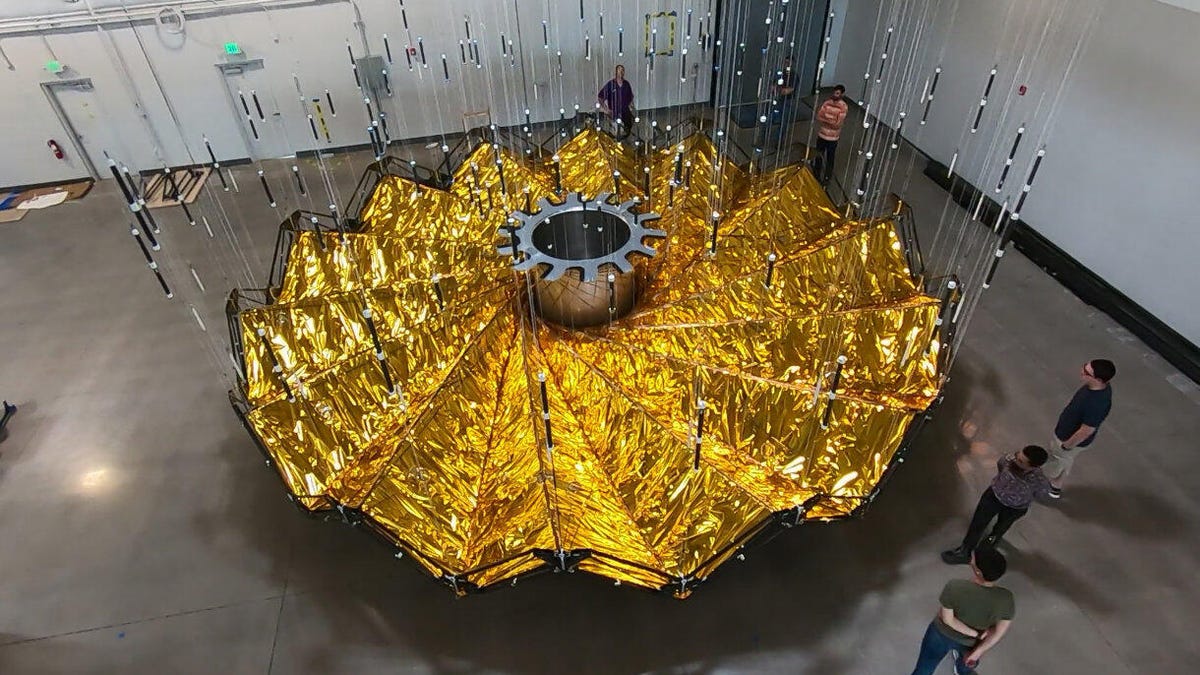NASA Wants Help Designing a Starshade to Find Earth-Like Planets
Do you have what it takes to throw some shade on distant stars?
The inner section of an origami-inspired starshade prototype unfurls.
Time to brush up on your origami skills. NASA is asking the public for ideas on how to make a starshade that could be tucked into a rocket, launched into orbit and then unfurled in space to a size of 330 feet (100 meters) in diameter.
Astronomers are on the hunt for Earth-like exoplanets. These small, rocky worlds can be hard to spot and study because the light from their host stars drowns them out when our telescopes go looking for them. A starshade is meant to fix that problem by blocking a star's glare to allow telescopes to see light reflecting off the planets around it. "This light is influenced by surface minerals, oceans, continents, weather, vegetation, and the gases that make up its atmosphere," NASA said in statement Monday. Getting a good look at that light can tell us a lot about a planet, including how similar it might be to our own.
The starshade concept has been kicking around at NASA for years. One idea would be to use a starshade in conjunction with a space-based observatory. The current design request makes use of existing telescopes that are already in operation on the ground. NASA is calling this the Hybrid Observatory for Earth-like Exoplanets, aka HOEE, because it combines ground and space components.
NASA JPL shared a video in 2014 showing how a starshade would work with a space telescope along with footage of a prototype opening up.
NASA's request for starshade ideas is hosted on the GrabCAD site, a gathering place for engineers, designers, and STEM students and professionals. It runs for 36 days and offers $7,000 (£5,840/AU$10,240) in prize money for the top designs.
The space agency is looking for a lightweight, low-mass, fuel-efficient design. It needs to pack up small for launch and then open up big once in space. It would also need to be able to maneuver into precise positions so it would line up with telescopes on Earth.
The starshade design seems pretty wild, but the potential for extraordinary discoveries is why NASA keeps coming back to it. As NASA said, the HOEE "would convert the largest ground telescopes into the most powerful planet finders ever made." Ultimately, it would become part of one of the biggest science quests of all time: the search for extraterrestrial life. Are there other Earths out there? A starshade could help us find out.


